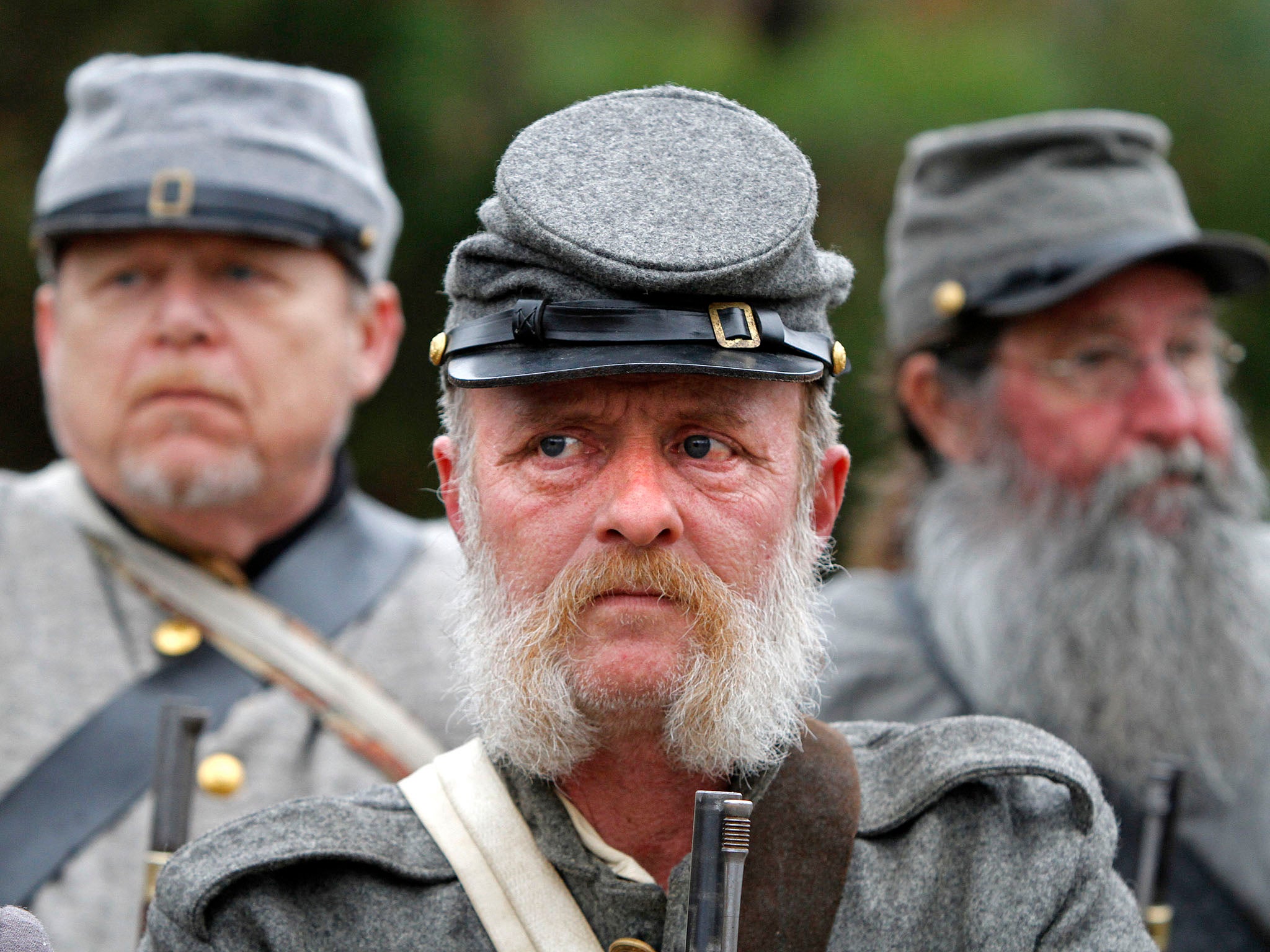Battle of Fredericksburg comes to life for 150th anniversary

On the second floor of the old brick building on Sophia Street, the three Confederate snipers waited for the Yankees.
They had their muskets at the ready, and paper ammunition cartridges were lined up on the window sills.
Outside, their comrades were retreating. There were shouts, crashes of gunfire and the sound of approaching drums. "Get ready," rebel Andrew Prasse said as he leaned out a window. "All right, let 'em have it, boys."
They refought the Civil War's Battle of Fredericksburg Saturday, a few days shy of its 150th anniversary.
There was no bloodshed, of course, but hundreds of reenactors like Prasse, 26, of Columbia Heights, made it feel as if there were.
Once again, the streets rang with the sound of the bugle, and the tramp of marching men. The walls echoed with rifle volleys. And the damp air above the Rappahannock River shook with the concussion of artillery.
There were even "dead" and wounded — one of whom cried out to fleeing buddies, "Don't leave me in the hands of the Yankees!"
The weather cooperated, too, as the day dawned amid eerie fog, but with moderate temperatures for the thousands of onlookers who thronged the sidewalks.
It was all part of the nation's continuing commemoration of the sesquicentennial of the Civil War years _1861 to 1865.
Prasse and his fellow rebels helped reenact the bitter street fighting that marked the first phase of the battle, and saw the Yankees drive the Confederates out of town in house-to-house combat.
The reenactors also sought to recreate the Union Army's crossing of the river into Fredericksburg on pontoon bridges.
This time, a modern floating "ribbon bridge" was deployed by the 189th Multirole Bridge Company, of the Army National Guard. It spanned the river, but fell just short of the bank on the Fredericksburg side.
As a result, Union soldiers finished their crossing by plunging into knee-deep water with their muskets and equipment. They then had to struggle up the steep, mud-slicked river bank.
Most had to be helped by young National Guardsmen. Several reenactors fell on the slippery mud. Caps tumbled off. Uniforms got muddy. And all got wet.
"Well, that sucked," said one Yankee after scrambling up the river bank.
Once on solid ground, though, they reformed and prepared for action.
Most looked like they had stepped out of 19th-century photographs.
Some union soldiers wore sprigs of greenery in their caps, just as members of the Irish Brigade had here 150 years ago. Many rebels looked authentically scraggly-bearded, in tattered clothing and chewing cigars.
"This is monumental," said Dave Cornett, 57, a retired firefighter from Roanoke, Va., who commanded the Confederate reenactors and looked like a general.
"This is the first time this river's been crossed" in this fashion at Fredericksburg since the battle, he said. "This is history."
"You know the old adage, 'If you forget your history, you're doomed to repeat it,''' he said. "We're doing this from the history aspect of it, to teach the public on this period of American history, and also to preserve the memory of those who were here 150 years ago."
The Battle of Fredericksburg was, perhaps, the saddest, most lopsided defeat for the Union Army during the war.
Northern casualties outnumbered Confederate by more than two to one.
In December 1862, the Union's Army of the Potomac had grown to 135,000 men, according to historian Francis Augustin O'Reilly.
Confederate Gen. Robert E. Lee's Army of Northern Virginia was 78,000 strong.
The Union Army, whose beloved commander, Gen. George McClellan, had just been fired for incompetence, was in turmoil.
McClellan's replacement, Gen. Ambrose Burnside, was unknown and untested.
"I anticipate only disaster," the New York diarist George Templeton Strong wrote of the situation.
The battle played out over three days, Dec. 11, 12 and 13, in cold, fog and mud — and a haunting display of the aurora borealis at night.
The Union Army's crossing of the river was the first bridgehead landing under enemy fire in American history, according to O'Reilly.
The street fighting was the first ever on the North American continent. And the town, which was pillaged by the Yankees, became the first American city sacked since Washington in the War of 1812.
Finally, in a ghastly scene, the northern army led a series of futile charges against Confederate positions at a place called Marye's Heights on Dec. 13.
Men fell like leaves, observers said. One officer, quoted by O'Reilly, said his men went down like bowling pins. Another Union officer lost 1,000 of his men in 45 minutes.
Union soldiers pinned down by rebels firing from behind a stone wall on Marye's Heights made barricades out of the bodies of slain comrades.
A northern general ordered his men to attack with unloaded muskets so they would not be tempted to pause and fire during their charge. (This fall, during a dig in the town, archaeologists unearthed a pile of bullets that looked like they had been unloaded from muskets.)
Two days later, the Yankees withdrew in defeat across the river. An estimated 12,600 were killed, wounded or missing, according the National Park Service.
A rebel general told his men, "There is not a live Yankee this side of the river."
Join our commenting forum
Join thought-provoking conversations, follow other Independent readers and see their replies
Comments